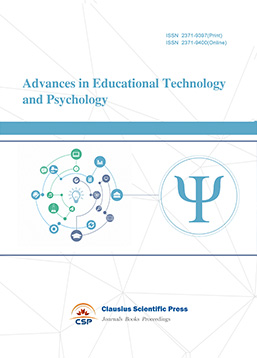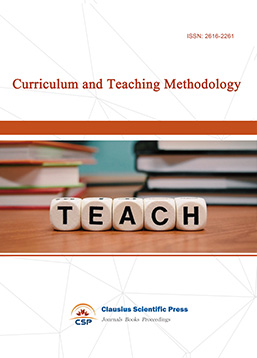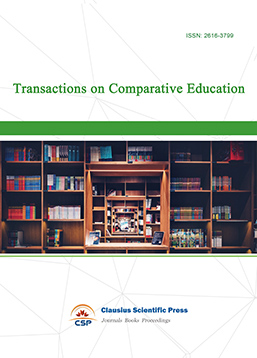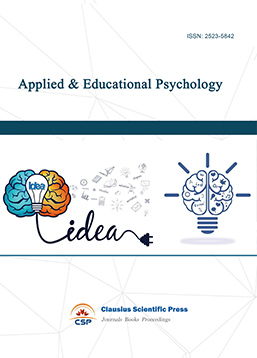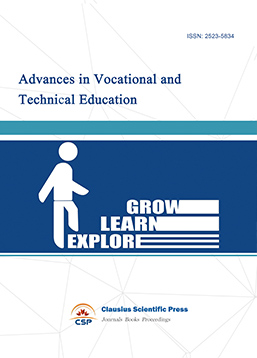Cultivation of Students' Language Application Ability in Japanese Language Teaching in the Information Age
DOI: 10.23977/aduhe.2025.070412 | Downloads: 9 | Views: 408
Author(s)
Ting Qiu 1
Affiliation(s)
1 Jingdezhen Ceramic University School of International Culture and Communication, Jingdezhen, Jiangxi, 333403, China
Corresponding Author
Ting QiuABSTRACT
People entering the information age are no longer satisfied with only mastering basic knowledge such as vocabulary and grammar, but expect to constantly update their knowledge structure and promote the improvement of their overall quality. At the same time, Japanese has gradually become a popular major, but due to the influence of traditional educational ideas, many schools have not applied information technology to teaching, leading to students becoming bored with the knowledge they have learned. This in turn affects learning outcomes. This article attempts to integrate information technology into Japanese language teaching activities, showcasing effective teaching effects through the use of multimedia teaching methods, providing students with a better learning environment and greater development space, enabling them to acquire good language application skills, and quickly find suitable methods and strategies for their own learning, and achieving comprehensive development. Comparing the traditional teaching mode with the Japanese teaching mode in the information age, and selecting Class A and Class B as participants, the experimental results show that the average total score of Class A in the final examination is about 77.486 points, while that of Class B is about 83.532 points. The overall score of Class B is better than that of Class A.
KEYWORDS
Information Age, Japanese Teaching, Language Application Ability, Cross Cultural Communication, Multimedia TechnologyCITE THIS PAPER
Ting Qiu, Cultivation of Students' Language Application Ability in Japanese Language Teaching in the Information Age. Adult and Higher Education (2025) Vol. 7: 73-81. DOI: http://dx.doi.org/10.23977/aduhe.2025.070412.
REFERENCES
[1] Shahnoza Aripovna Rustamova, Munavvar Xaydarovna Rashidova. "Formation of self-assessment competence of primary school students in foreign language teaching." Science and Education 3.4. (2022): 1075-1080.
[2] Kudratbek Makhmudov. "Ways of forming intercultural communication in foreign language teaching." Science and Education 1.4. (2020): 84-89.
[3] Chantelle Warner, Beatrice Dupuy. "Moving toward multiliteracies in foreign language teaching: Past and present perspectives… and beyond." Foreign Language Annals 51.1. (2018): 116-128.
[4] Seth Wiener, Seth Goss. "Second And Third Language Learners’Sensitivity to Japanese Pitch Accent Is Additive: An Information-Based Model of Pitch Perception." Studies in Second Language Acquisition 41.4. (2019): 897-910.
[5] Mirzayev, Sh Oripova. "Communicative method–a new approach in the practice of teaching foreign language." Science and innovation 1.B6. (2022): 778-783.
[6] Jonathon Reinhardt. "Metaphors for social media‐enhanced foreign language teaching and learning." Foreign Language Annals 53.2. (2020): 234-242.
[7] Marupova Gulsora, Saydaliyeva Mamura. "Effective Methods of Teaching Foreign Languages to Students." Galaxy International Interdisciplinary Research Journal 9.12. (2021): 697-699.
[8] Rustamov Ilkhom Tursunovich. "Modern Methods in the Methodology of Teaching a Foreign Language." Central Asian Journal of Theoretical and Applied Science 3.12. (2022): 146-152.
[9] Mirzayevna Mahbuba. "Innovative technologies in foreign language teaching methodology." ACADEMICIA: An International Multidisciplinary Research Journal 11.12. (2021): 465-467.
[10] Pitambar Paudel. "Information and Communication Technology in Foreign Language Classes in English: Roles and Practices." International Journal of Technology in Education and Science 5.1. (2021): 37-55.
[11] Linsheng Wang. "Influence of Teacher Behaviors on Student Activities in Information-Based Classroom Teaching." International Journal of Emerging Technologies in Learning (iJET) 17.2. (2022): 19-31.
[12] Iryna O. Biletska, Alla F. Paladieva, Halyna D. Avchinnikova, Yuliia Yu. Kazak. "The use of modern technologies by foreign language teachers: developing digital skills." Linguistics and Culture Review 5.S2. (2021): 16-27.
[13] Fitria Lestari, B. Saryantono, M Syazali. "Cooperative learning application with the method of" network tree concept map": based on Japanese learning system approach." Journal for the Education of Gifted Young Scientists 7.1. (2019): 15-32.
[14] Tulaboeva Gulorom Tulaboevna, SZ Mirsharapovna. "Foreign Language Teaching in the Conditions of Informatization of Education." Journal of new century innovations 18.3. (2022): 186-192.
[15] Rabia Meryem Yilmaz, Fatma Burcu Topu, A. T. Tulgar. "An examination of the studies on foreign language teaching in pre-school education: A bibliometric mapping analysis." Computer Assisted Language Learning 35.3. (2022): 270-293.
[16] Rashid Hashimovich Boboxo’Jayev. "Learning foreign languages online." Science and Education 3.6. (2022): 840-845.
[17] Y. X. Kushakov, Z. B. Bekimbetova, G. Tulabayeva. "Teaching Professional Terminology as A Part of Whole Language Teaching." Journal of new century innovations 11.6. (2022): 74-79.
[18] Wei Haiyan. "Cultivation of Intercultural Communicative Competence in College Japanese Teaching under the Background of" Internet plus ". Office Automation 27.10. (2022): 25-27.
[19] Hong Ying. "Research on the Cultivation of Intercultural Communicative Competence in Japanese Teaching in Applied Undergraduate Colleges." Journal of Huangshan University 22.04. (2020): 131-133.
| Downloads: | 22176 |
|---|---|
| Visits: | 1244604 |

 Download as PDF
Download as PDF